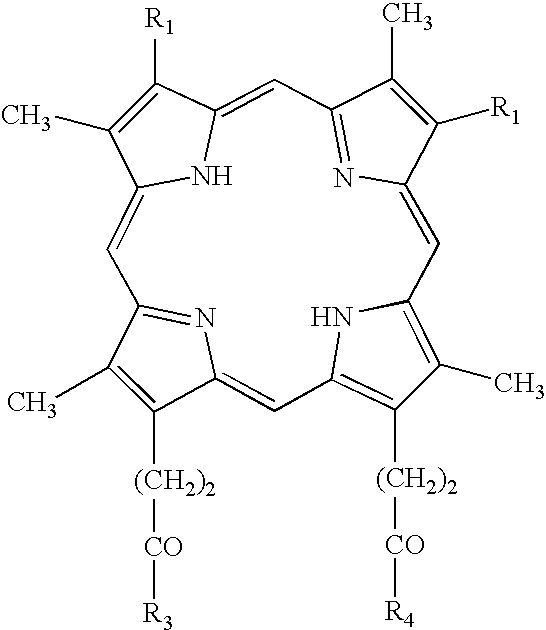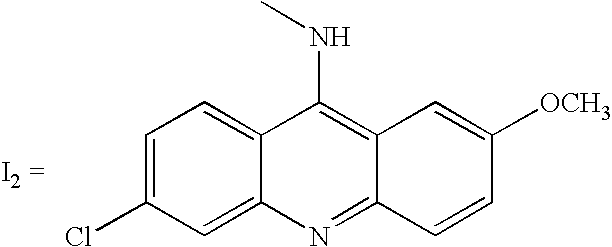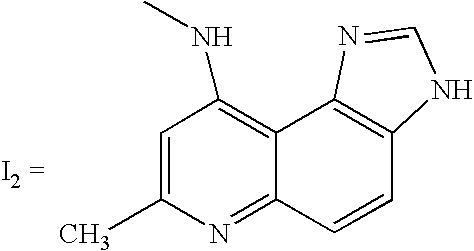Purification of biomolecules from contaminating intact nucleic acids
a technology of biomolecules and nucleic acids, applied in the direction of nucleic acid reduction, microorganisms, enzyme preparations, etc., can solve the problems of undesirable cellular components, affecting the subsequent process, and releasing from the cells undesired nucleic acids and membrane lipids,
- Summary
- Abstract
- Description
- Claims
- Application Information
AI Technical Summary
Benefits of technology
Problems solved by technology
Method used
Image
Examples
example 1
Removal / Inactivation of Contaminating DNA from Taq DNA Polymerase with Manganese Tetrapyridylporphyrin and Oxone®
[0109] Four aliquots of Taq DNA Polymerase (5 units / μl; Sigma product D1806) were treated with manganese tetrapyridylporphyrin (MnTP) and Oxone® at the final concentrations listed in Table 4 below. MnTP was added first, the solution was gently mixed and allowed to incubate at room temperature for ˜4 minutes. Oxone® was added last, the solution was gently mixed and allowed to incubate at room temperature for 1 hour.
TABLE 4Concentrations of reagents for treatment of Taq DNA polymerase1234MnTP (μM)01005001000Oxone ® (μM)0100010001000
[0110] Each sample was then subjected to Sephadex G-50 centrifugal chromatography (Sigma product S5059) and analyzed via PCR Method 1 above. Two reactions were performed with each sample to be tested; one containing no exogenous DNA (no-template control to test contaminant levels) and one containing exogenously added plasmid DNA (positive contr...
example 2
Removal / Inactivation of Contaminating DNA from Taq DNA Polymerase with Iron Tetrapyridylporphyrin and Oxone®
[0112] The methods of Example 1 were repeated exactly, with the substitution of iron tetrapyridylporphyrin for manganese tetrapyridylporphyrin. The results for Example 2 were identical to those of Example 1.
example 3
Removal / Inactivation of Contaminating DNA from Taq DNA Polymerase with Iron Methidiumpropyl EDTA and Oxone®
[0113] The methods of Example 1 were repeated exactly, with the substitution of iron methidiumpropyl EDTA for manganese tetrapyridylporphyrin. The results from Example 3 were identical to Example 1 except that PCR Method 2 was also used to analyze treated samples. The no template controls showed no amplification products (indicative of successful removal / inactivation of contaminant DNA), while the positive controls (exogenously-added template) successfully generated the expected product.
PUM
| Property | Measurement | Unit |
|---|---|---|
| Temperature | aaaaa | aaaaa |
| Temperature | aaaaa | aaaaa |
| Temperature | aaaaa | aaaaa |
Abstract
Description
Claims
Application Information
 Login to View More
Login to View More - R&D
- Intellectual Property
- Life Sciences
- Materials
- Tech Scout
- Unparalleled Data Quality
- Higher Quality Content
- 60% Fewer Hallucinations
Browse by: Latest US Patents, China's latest patents, Technical Efficacy Thesaurus, Application Domain, Technology Topic, Popular Technical Reports.
© 2025 PatSnap. All rights reserved.Legal|Privacy policy|Modern Slavery Act Transparency Statement|Sitemap|About US| Contact US: help@patsnap.com



